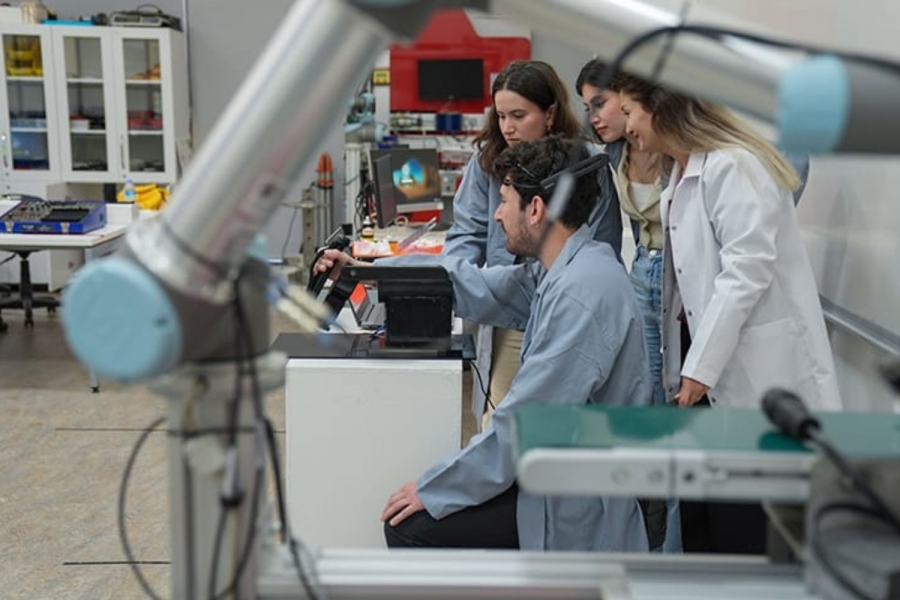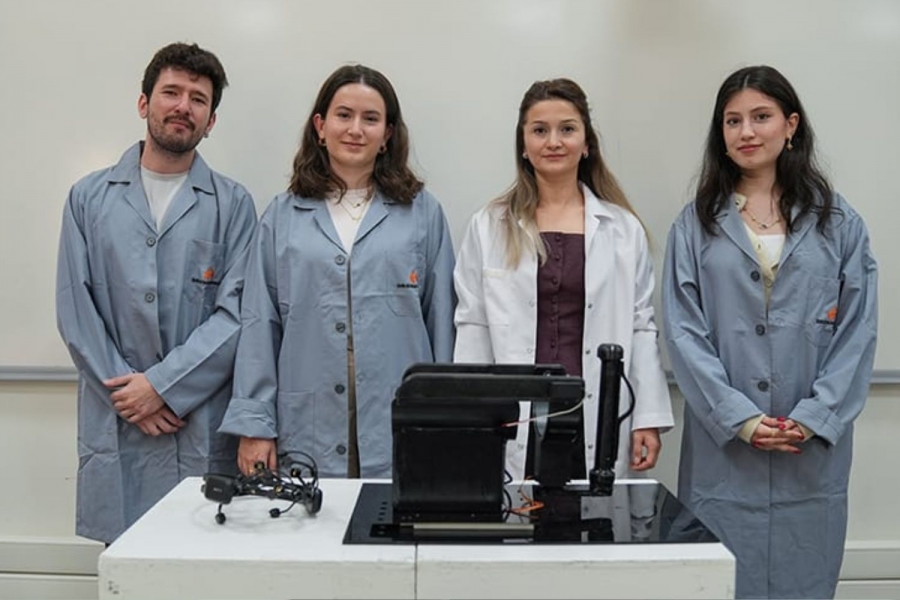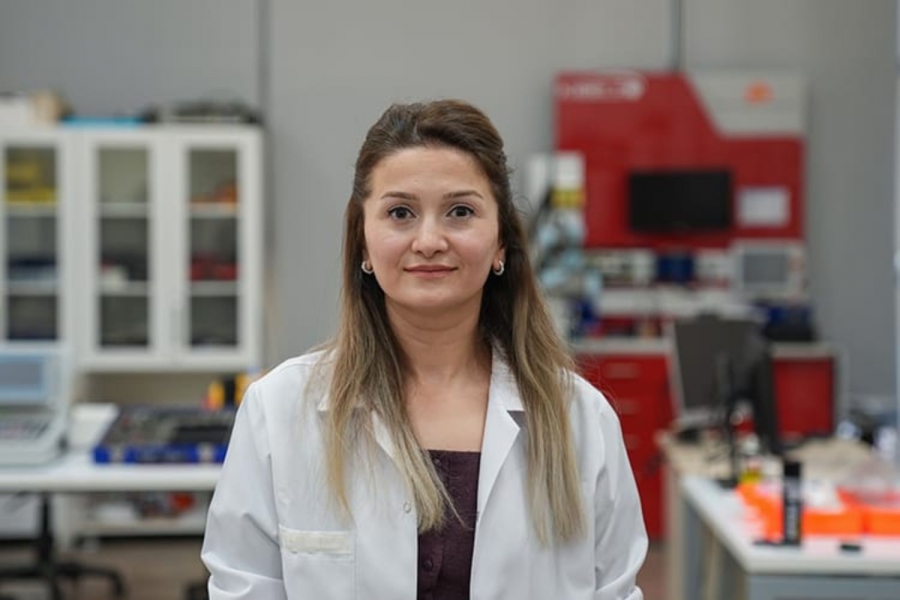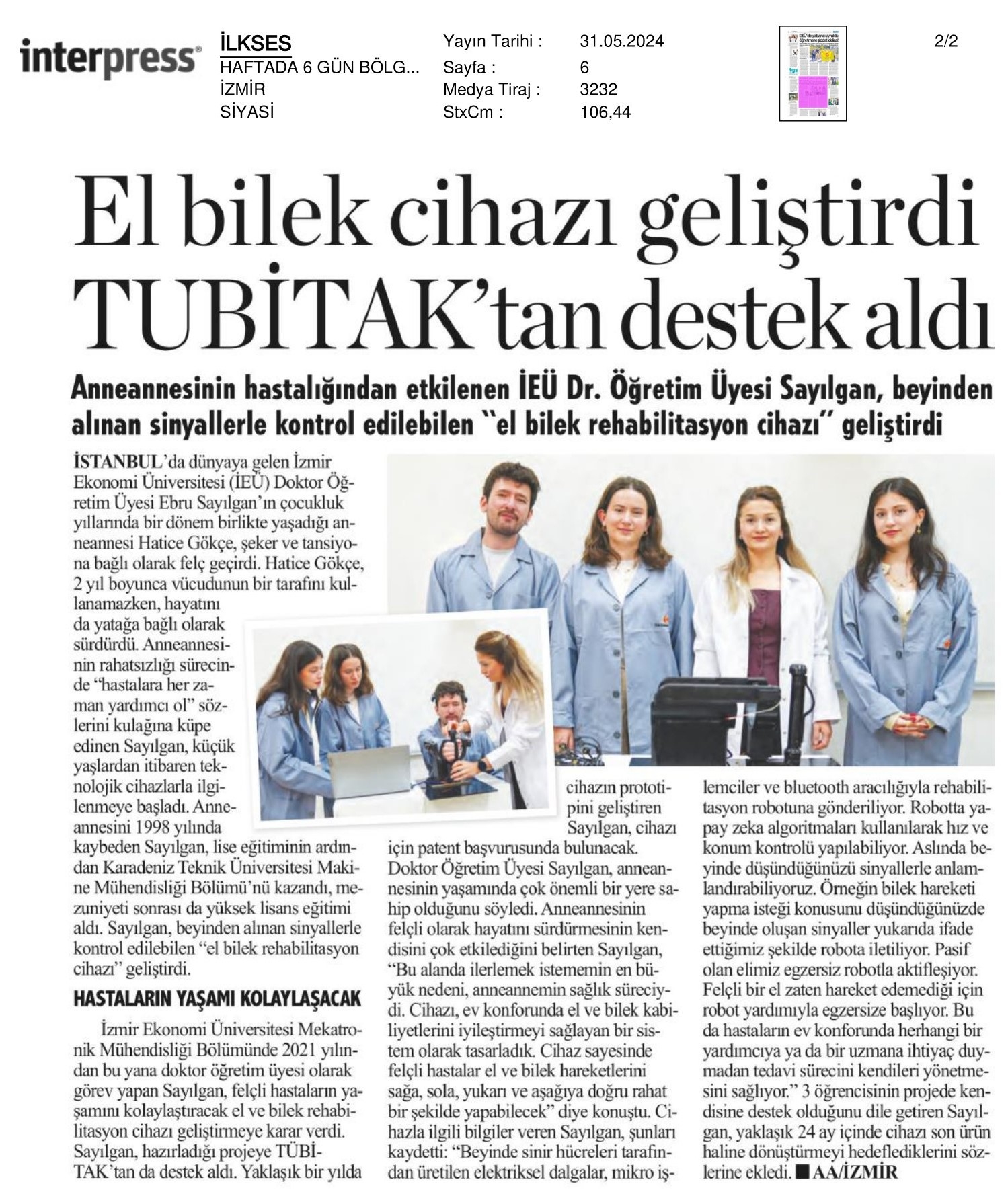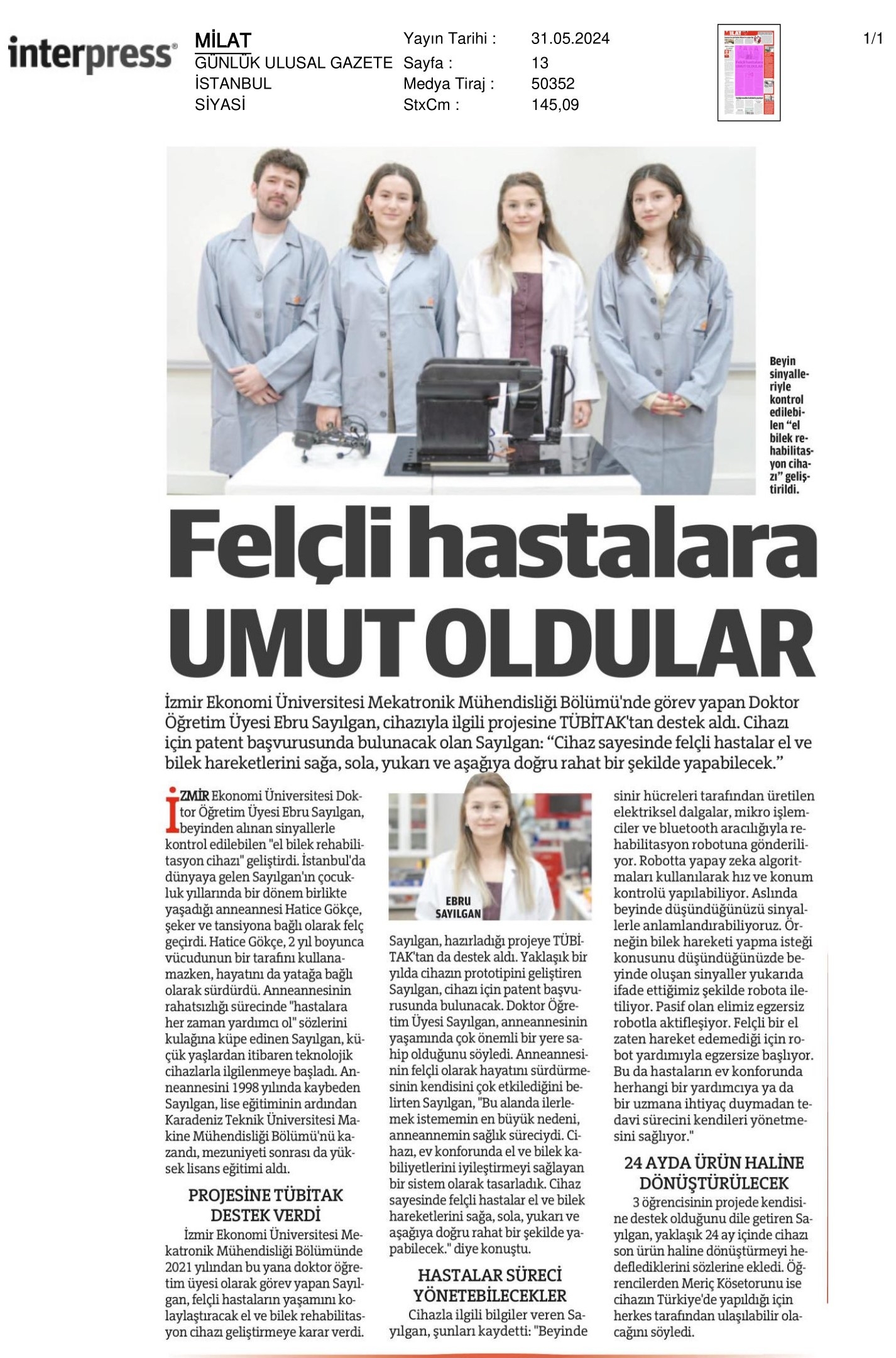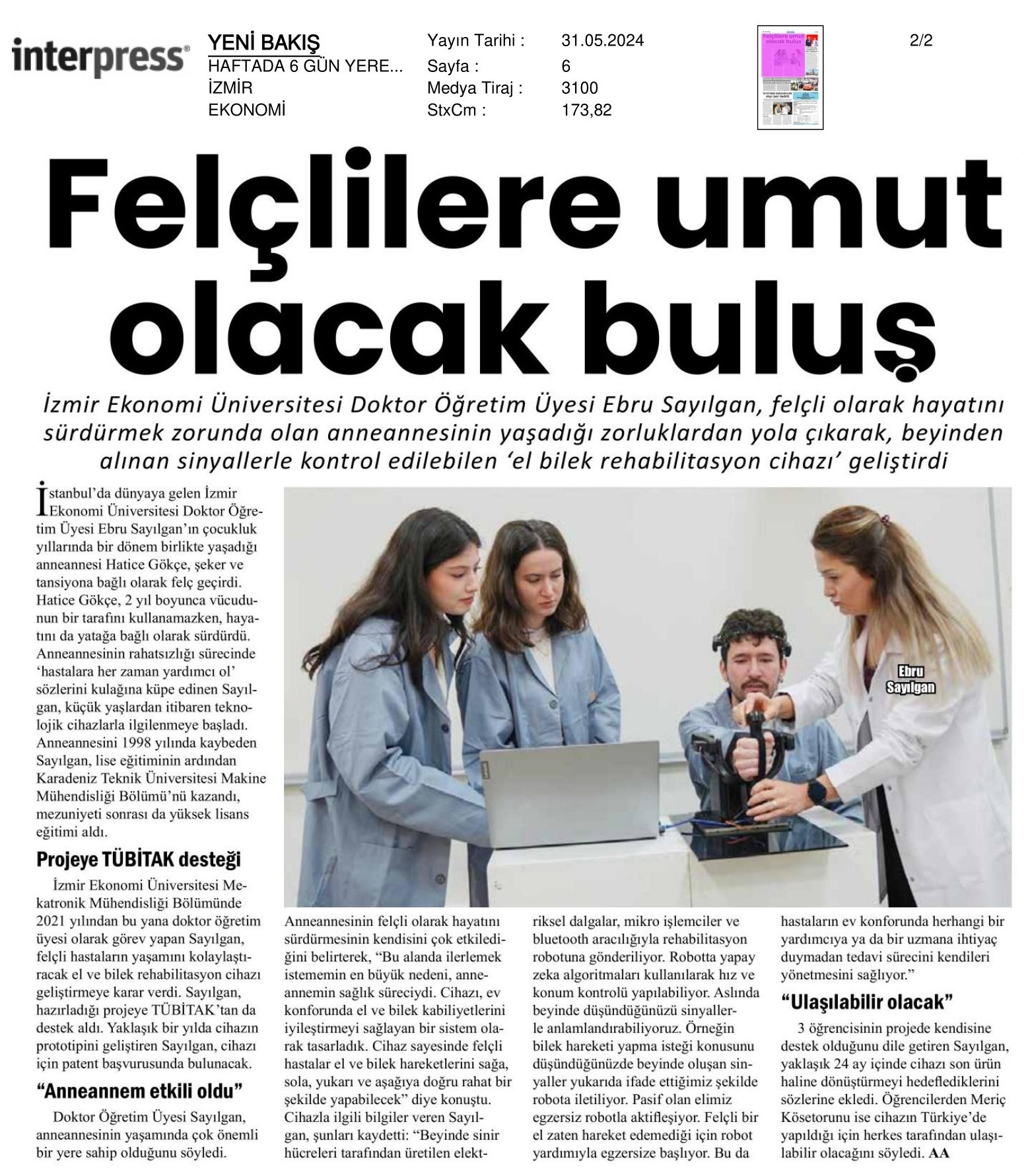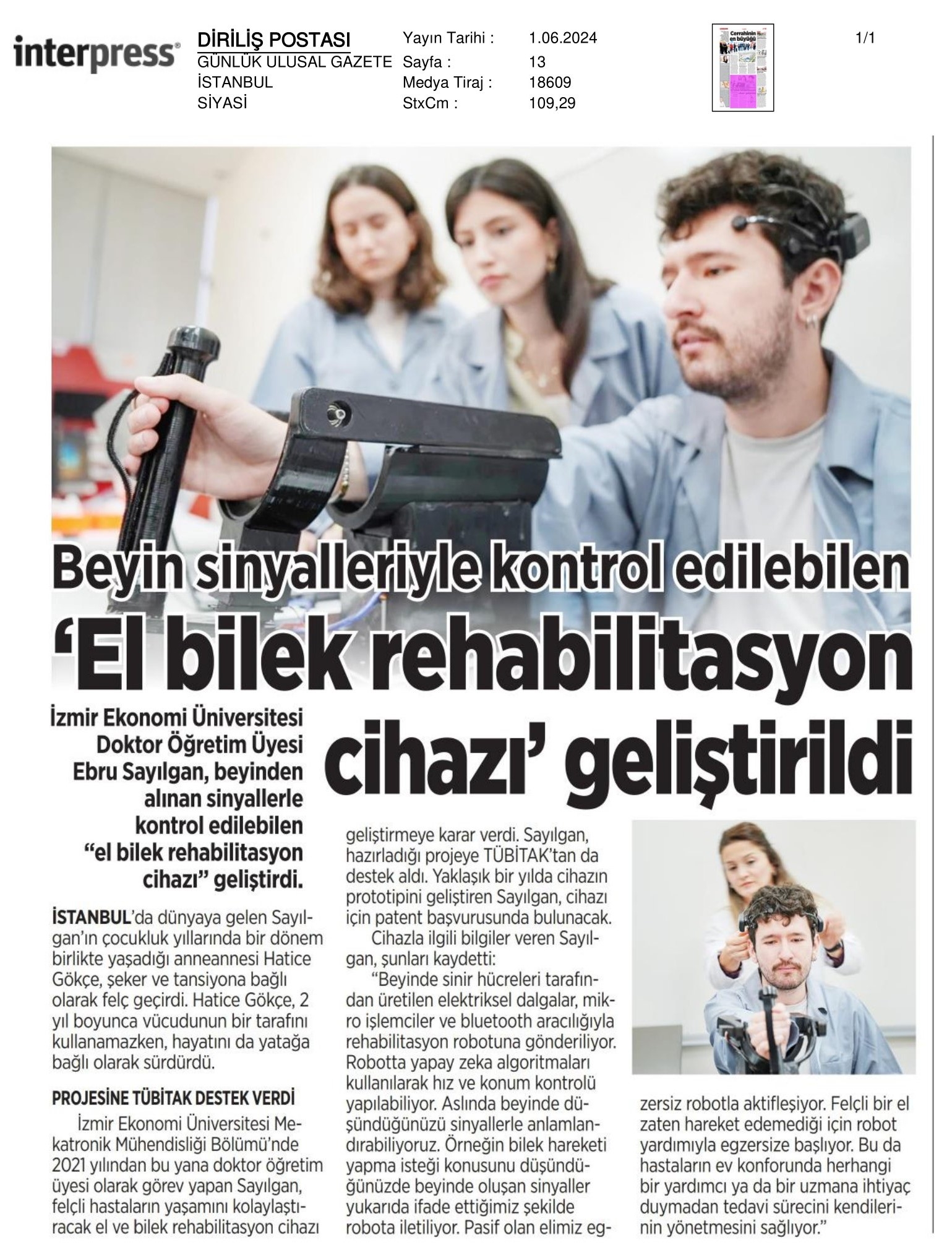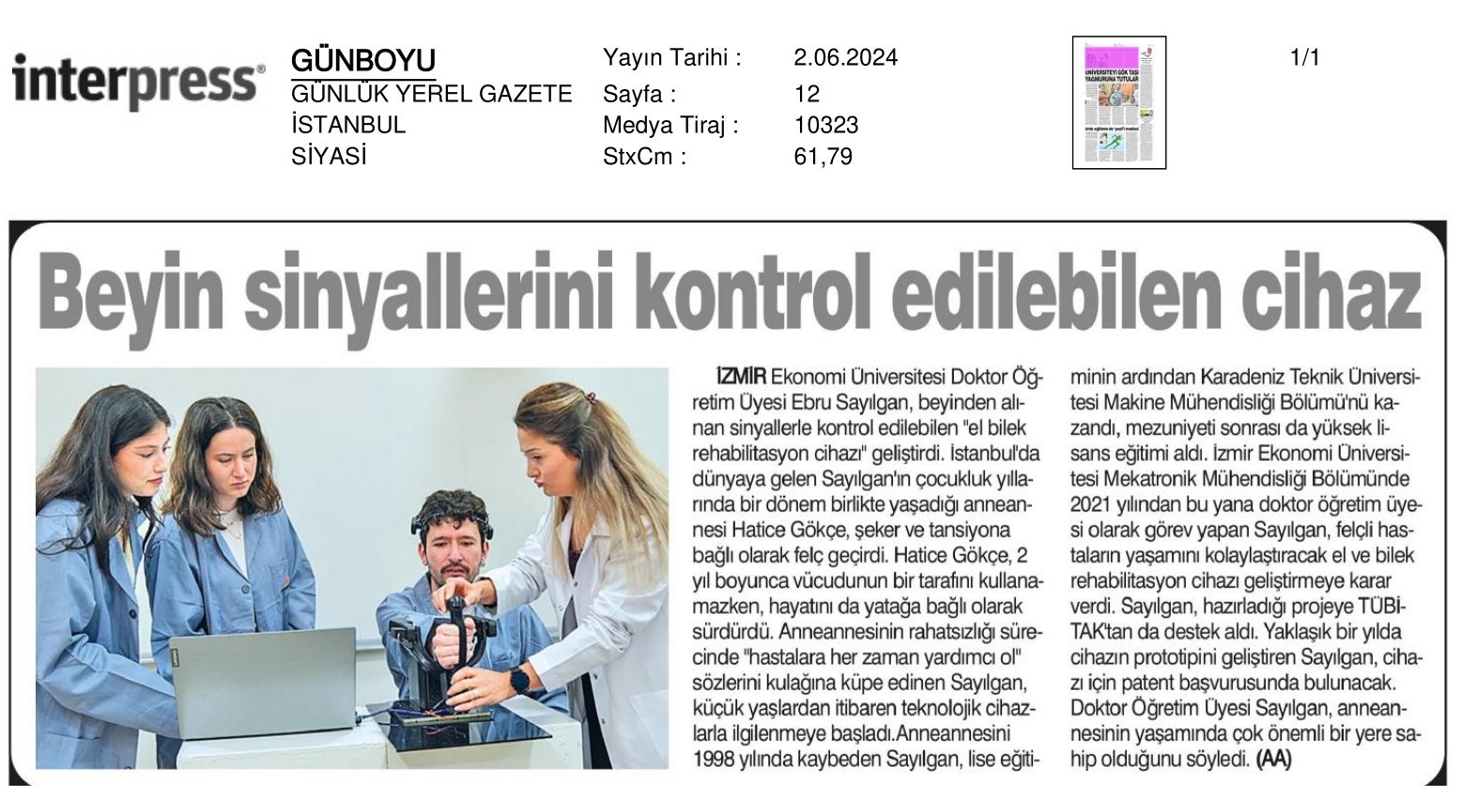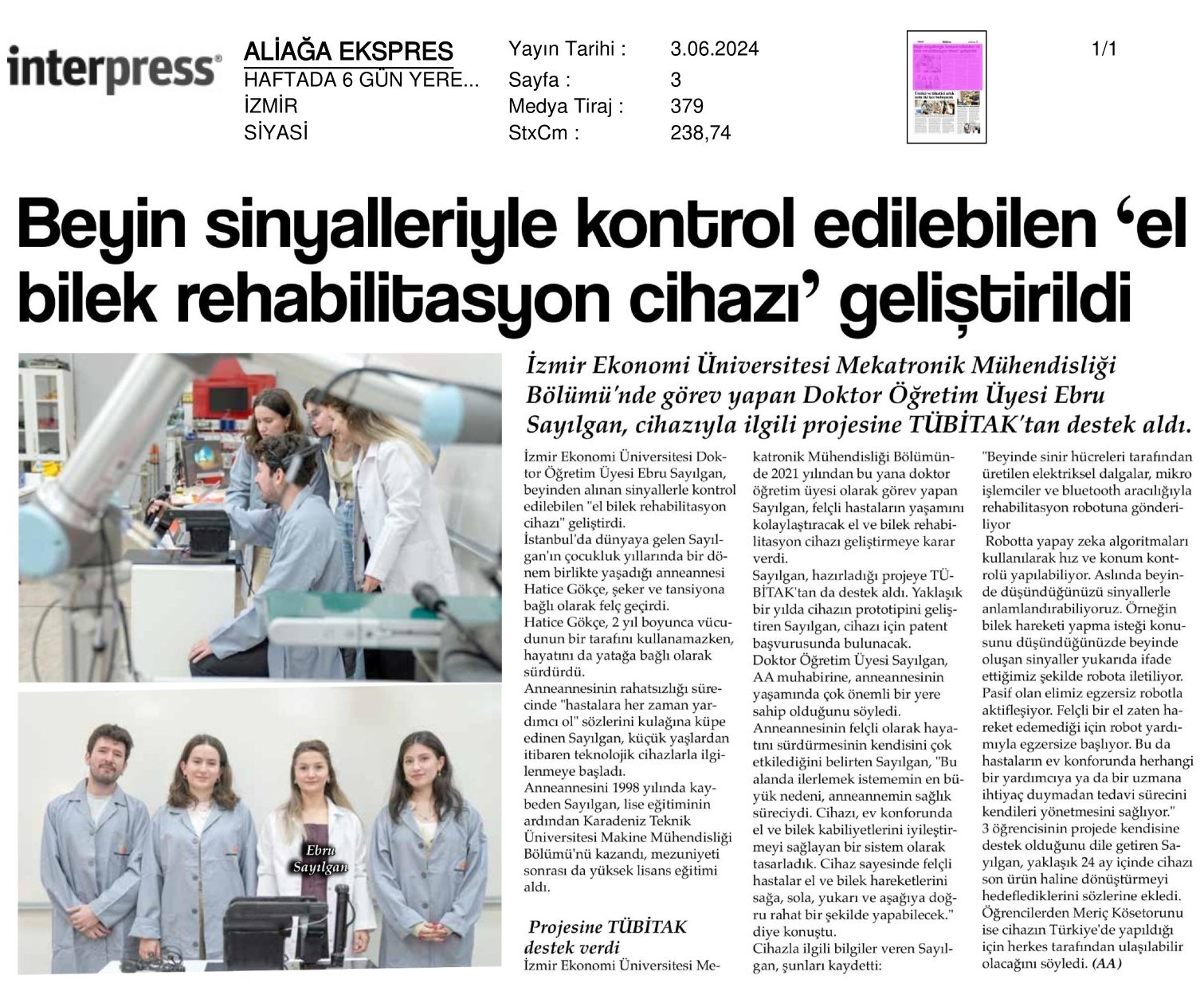Inspired by Her Grandmother, She Became Hope for Paralyzed Patients
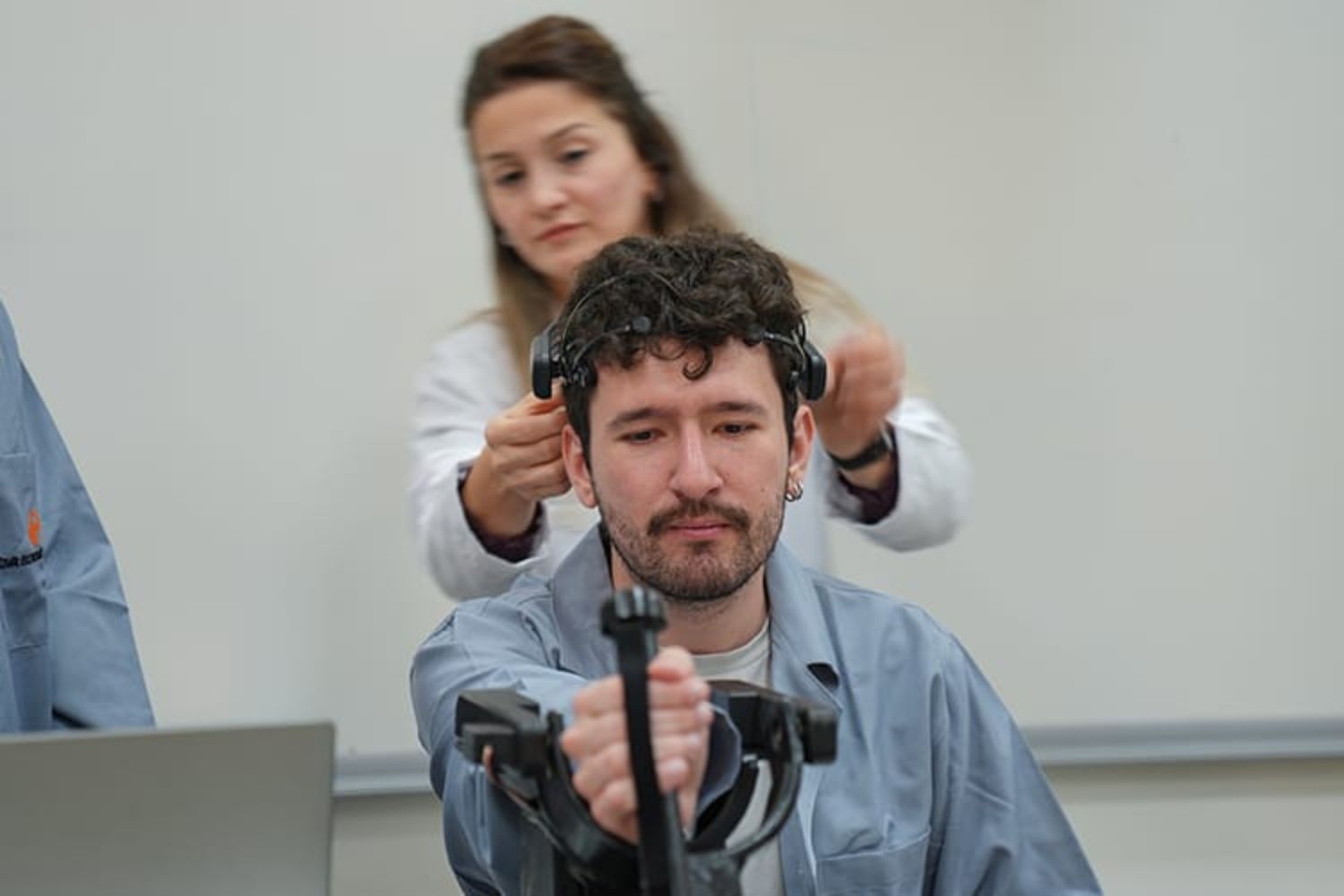
Asst. Prof. Dr. Ebru Sayılgan, Lecturer at Izmir University of Economics (IUE) Department of Mechatronics Engineering, developed a ‘wrist rehabilitation device’ for paralyzed patients that can be controlled by signals received from the brain.
Born in Istanbul, Sayılgan lived with her grandmother Hatice Gökçe for a while during her childhood. Hatice Gökçe suffered a stroke due to diabetes and blood pressure and could not use one side of her body for two years, and continued her life bedridden. Sayılgan, who took her grandmother's words ‘Always help the sick’ to heart during her illness, started to be interested in technological devices from an early age. Sayılgan, who lost her grandmother in 1998, enrolled in the Department of Mechanical Engineering at Karadeniz Technical University after her high school education and received a master's degree after graduation.
SUPPORT FROM TUBITAK
Sayılgan, who has been working at IUE Department of Mechatronics Engineering since 2021, decided to develop a hand and wrist rehabilitation device that would make the lives of paralyzed patients easier. Sayılgan also received support from TUBITAK for her project. Sayılgan, who developed the prototype of the device in about a year, will apply for a patent for her device.
Asst. Porf. Dr. Sayılgan, who continues her studies with her students Meriç Kösetorunu, Özlin Çetinbaş and Eflin Türkmen, stated that her grandmother's paralyzed life affected her a lot during her childhood and said, “The biggest reason why I wanted to progress in this field was my grandmother's health process. We designed the device as a system that improves hand and wrist abilities in the comfort of home. Thanks to the device, paralyzed patients will be able to make hand and wrist movements to the right, left, up and down comfortably.”
IN THE COMFORT OF HOME
Giving information about the device, Sayılgan continued as follows: “Electrical waves produced by nerve cells in the brain are sent to the rehabilitation robot via microprocessors and Bluetooth. The robot can control speed and position using artificial intelligence algorithms. In fact, we can make sense of what you think in the brain with signals. For example, when you think about the desire to make a wrist movement, the signals generated in the brain are transmitted to the robot as we mentioned above. Our passive hand is activated by the exercise robot. A paralyzed hand starts exercising with the help of a robot because it cannot move anyway. This allows patients to manage the treatment process themselves without the need for any helpers or a specialist in the comfort of home.”



